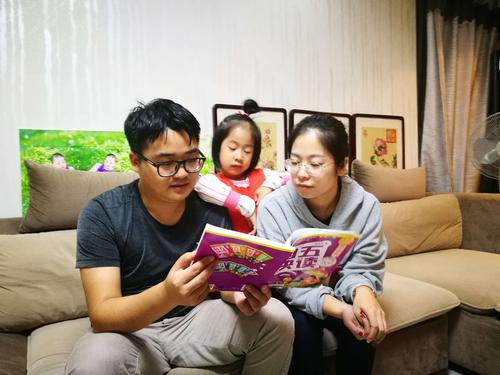(保持)平衡的英文)平衡翻译)平衡英语怎么说-香草天空豆瓣
2023年4月19日发(作者:byebyelove)Psychology 1320: Language Development
Spring 2002 / Ganger
Review sheet for Exam 2
Posted on the web 3/18/02, 4:05pm
Distributed in class 3/19/02
Format (CHANGED SINCE ORIGINAL REVIEW SHEET)
Section 1: matching (20 points) (10-20 questions)
Matching of features to sounds with some terms and definitions mixed in
Section 2: different matching (20 points) (5-10 questions)
Match phonological processes to examples from child speech.
(see example below)
Section 3: Short Answer, 30 points (6 questions, 5 points each)
Section 4: Essay questions, 30 points (2 questions out of 3, 15 points each)
(see questions below)
TOPICS & TERMS
NOTE: Because we are saving a lot of the theoretical issues in phonological development
until after this exam, there are not many essay questions from this topic area. Instead,
more of the objective and part of the exam will be devoted to phonology, and more of the
essay portion will be dedicated to the other material.
Syntactic bootstrapping
Be able to explain the problem of learning from observation
Be able to explain why verbs are particularly hard to learn from observation
Linking
Be able to describ守株待兔文言文翻译注释 e and discuss implications of
o Gilette & Gleitman experiment with videotapes
o Fisher et al (1994) experiment with novel verbs
Known differences and relationships among pr和中秋团圆有关的诗句 osodic, semantic, and syntactic
bootstrapping
Prosodic Bootstrapping
Prosody
Prosody as a cue to sentence structure (syntax)
Infant Directed versus Adult Directed Speech
Fisher & Tokura study
Hirsch-Pasek studies
Jusczyk studies
Fernald & McRoberts cri高鼎的古诗大全 tique of prosodic bootstrapping theory and experiments
p. 1
Grammatical Development
Transitional forms
Meanings expressed in two-word utterances
Morpheme
Rich and poor inflection 虞世南《蝉》的意思
Order of acquisition of morphemes (Brown)
Development of negation and questions
Development of more advanced constructions
Brown’s stages based on MLU. Rough ages and major accomplishments of each
stage.
Interpretation of MLU
Phonology
Know consonant and vowel tables.
Name a sound (symbol) given the featural description or give a featural
description given the sound (symbol). (features include the place and manner of
articulation as well as tenseness, roundedness, and voicing)
Phoneme versus allophone
Timeline of early phonological development (production only; perception NOT
included on this exam)
Influence of environment on babbling
Be familiar with common (child) phonological processes (velar fronting, weak
syllable omission, cluster reduction, and many more…). You shouldn’t need to
memorize these per se, but you should be able to recognize them.
Be able to look at a child’s pronunciation of an English word and produce the
steps (phonological processes) the child went through to get to his pronunciation.
Here is an example of this (in the format of Section 2 above) from an old exam:
Instructions:
The questions below should be answered with the following
choices (a-k).
More than one of these choices may be true for any
question. Use all that apply.
Not all of the choices a-k have to be used.
Words in quotes are written in English orthography.
Words in slashes (//) are written in phonetic symbols.
a. consonant cluster reduction
b. assimilation to place of articulation
c. assimilation to manner of articulation
e. reduplication (possibly involving omission of one or more
syllables)
f. weak syllable or weak vowel omission (“weak” means
unstressed)
h. stopping
i. final consonant deletion
j. voicing (not by assimilation)
k. none of the above
p. 2
1. N. Smith’s rule 16 (“Post-consonantal /l, r, w, j/ are
deleted.”) is an example of _____.
The following examples were recorded from a child named Robert
between 17 and 26 months of age or Rachel (from HW 1) between
2;3 and 2;9.
2. “snowman” pronounced as /mo maen/ is an example of _____.
3. “fork” pronounced as /bork/ is an example of ________.
4. “sleeve” pronounced /lib/ is an example of ________.
5. “outside” pronounced as /saI/ is an example of _______.
6. “drop” pronounced as /jap/ is an example of _______.
(Hint: think about the natural adult pronunciation of “drop”)
Essay Questions
Two of these exact questions will appear on the exam. You will be able to choose from 3.
GRAMMATICAL DEVELOPMENT QUESTIONS
As a measure of linguistic maturity, MLU is useful for certain purposes but it has
limitations. When might MLU be a useful measure? When it is not useful? (That is,
what can it tell you and what can’t it tell you?)
Describe the stages in the development of negation. Include examples.
Describe 郭沫若作者简介 the stages in the development of wh-questions. Include examples.
Discuss some possible reasons why inflectional morphology has a protracted period of
development in many children learning English.
BOOTSTRAPPING QUESTIONS
Prosodic bootstrapping (3 parts)
a. What is prosodic bootstrapping?
b. What features of prosody are potentially helpful and what could they help the infant
learn?
c. Describe at least one reason why prosodic bootstrapping may not work (for example,
one of Fernald & McRoberts\' criticisms).
With reference to Hirsh-Pasek’s and Jusczyk’s research, discuss the use of prosodic
information by infants and the major changes in what information infants pay attention to
as they get older. Include specific abilities and ages.
Describe the differences among prosodic, semantic, and syntactic bootstrapping. Then
describe how the three types of algorithms could work together in language development.
Syntactic bootstrapping. (3 parts)
Referring to the Fisher, Hall, Rakowitz, & Gleitman (1994) paper may be helpful.
p. 3
a. Why, according to Fisher, Gleitman, and colleagues, is observation insufficient for
determining the meanings of contrasts between verbs such as give and receive or eat
and feed?
b. What information could a child use to differentiate the m侍妾生涯 eanings of give and
receive or eat and feed?
c. What evidence is there that children make use of this information?
Describe why verbs are harder for children to learn than nouns. Include at least two
independent reasons.
Describe the Gilette & Gleitman experiment, which used videotapes of parents and
children playing. How did they show that verbs are harder to learn from observation than
nouns?
PHONOLOGY QUESTIONS
Describe the timeline of development of phonological production in children. Be sure to
give a full description of each step.
p. 4
羊绒的英文译语怎么说-美国初选
更多推荐
bootstrapping是什么意思tstrapping在线翻译读








发布评论